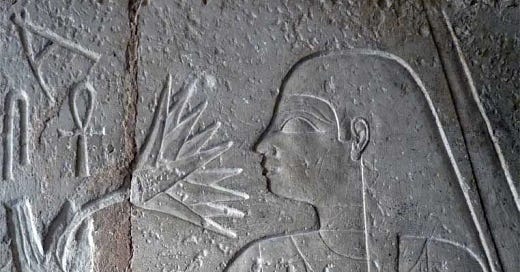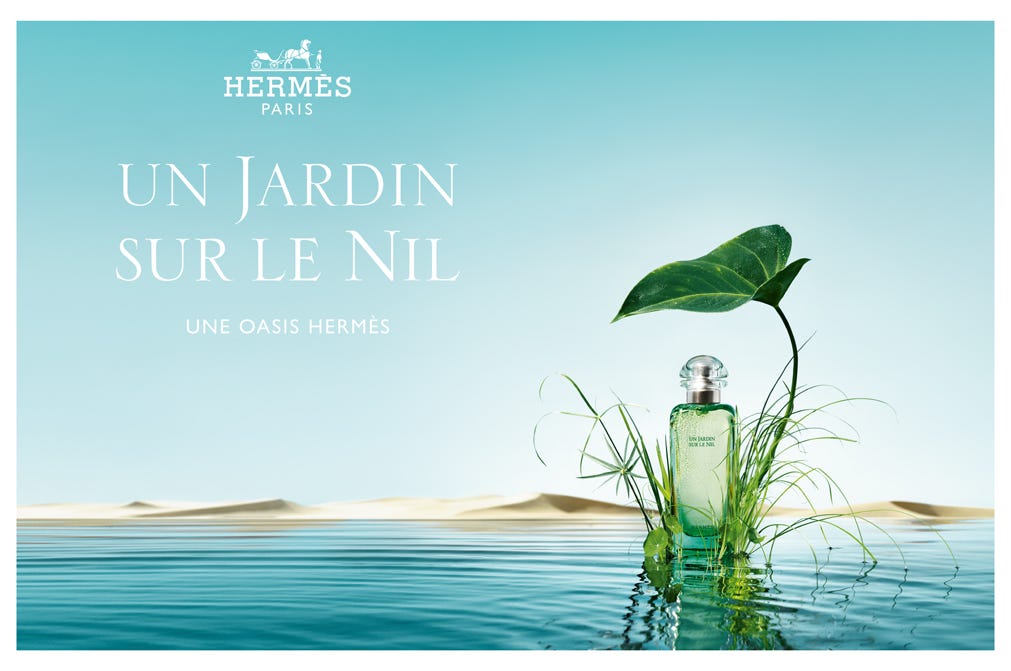I’ve always loved Hermés fragrances. I think what I appreciate so much about them is their dedication to elemental, earthy fragrances that feel sophisticated and understated, yet also wild and of nature. They can be read on the surface as being uncomplicated but always tell a unique story. This is thanks in part to the ingenious work of Hermés house perfume Jean-Claude Ellena. As noted by Chandler Burr in the New Yorker article “The Scent of the Nile” (2005), which follows Ellena as he creates the classic Un Jardin sur Le Nil:
“Ellena is a minimalist in materials and a maximalist in thought. Over the years, he has refined a sort of Bauhaus School approach to perfumery: clean scents made from deceptively simple chemical formulas.”
I do not think this ethos is more evident than in their Jardins line of perfumes, which to date include seven fragrances in total. This line is inspired by fantasy gardens from around the world as imagined by Ellena. The fragrance that first drew me to the Jardins line was Un Jardin Sur Le Nil, which was first released in 2005 and is inspired by the idea of a garden on the banks of the Nile. This emphasis on the ideal, on the fantasy of a time and place rather than reality, is at the core of Ellena’s fragrance philosophy, as Burr observes:
“Ellena is proud to be an illusionist. ‘Picasso said, ‘Art is a lie that tells the truth,’’ he told me. ‘That’s perfume for me. I lie. I create an illusion that is actually stronger than reality. Sketch a tree: it’s completely false, yet everyone understands it.’ The point of Un Jardin sur le Nil, he said, was not to reproduce the scent of a green mango but, rather, to create a fantasy version of green mango.”
This blog is named “The Holy Lotus” as a reference to Egypt, the banks of the Nile, and a romantic ideation of the endlessly regenerating lotus, a flower that is reborn every day by blooming daily before sinking back into the waters at night. For Ancient Egyptians, this flower was a sacred symbol of eternal life and rebirth, a concept at the center of the Egyptian religion, and often reliefs on the walls of tombs and temples show Egyptians inhaling the sacred lotus flower, breathing in the essence of eternity. I have always had an obsession and fascination with Ancient Egypt since I was a young girl and can recall being enchanted by descriptions of Egyptian feasts with crowns of honeycombs being placed atop elaborate their cascading and heavily decorated wigs, the honeycombs perfuming the air, along with papyrus, lotus, myrrh, and other aromas of the Nile.
Naturally, with this love of all that is Egyptian, I was drawn to Un Jardin sur Le Nil and discovered it early in my fragrance journey. However, I can remember being mystified when I first smelled this perfume, because it did not align with my image of Egypt and the Nile at all. I had to reconcile the old, opulent, decadent image I had of Egypt with something much more intimate, because this perfume has an immediate vegetal kitchen garden feeling with its top notes of green mango, tomato and carrot.
Indeed, according to Burr, the following was apparently the initial image that created the foundation for what would become Un Jardin sur le Nil:
One morning, Ellena and his companions went for a trip on the Nile in an aged wooden motorboat; ancient ruins on the surrounding rock cliffs loomed over them as Ellena steered the party upstream. The Nile has an opalescent black hue that, in shallow depths, becomes transparent. It has a fresh smell. They motored past wild reeds and feluccas—narrow boats with tall triangular sails—until they reached a small island. Walking ashore, they began following a street that led to a Nubian village. It was during this stroll that Ellena saw, hanging low in the trees that lined the street, plump green mangoes.
I love that Ellena’s vision for the fragrance came from something as simple and pastoral as the mango trees of a small village on the banks of the Nile. You definitely feel that inspiration in the country garden opening.
Once I got over the initial surprise of the scent, I was taken with Un Jardin sur le Nil almost immediately.
The Egypt I fantasize of is there in parts too, with notes of lotus, incense, bulrush lingering in the Nile reeds and creating an aquatic underpinning to the fresh fruits and vegetables. There is an airiness to the scent and you can easily imagine yourself sailing across the Nile in this dreamy scentscape.
It is perhaps a more romantic, a more Hermés idea of the Nile, but it is there. I find the overall effect of the fragrance calming, bright, and serene, and you can easily imagine endless blue skies and warm, hot Egyptian winds blowing in the air, and the whispers of the old world merging with the new.
For me Un Jardin sur le Nil is fragrance at its best, evocative and timeless, with a clear vision that draws you in, inviting you into Ellena’s dream of the Nile.
References
https://www.newyorker.com/magazine/2005/03/14/the-scent-of-the-nile







